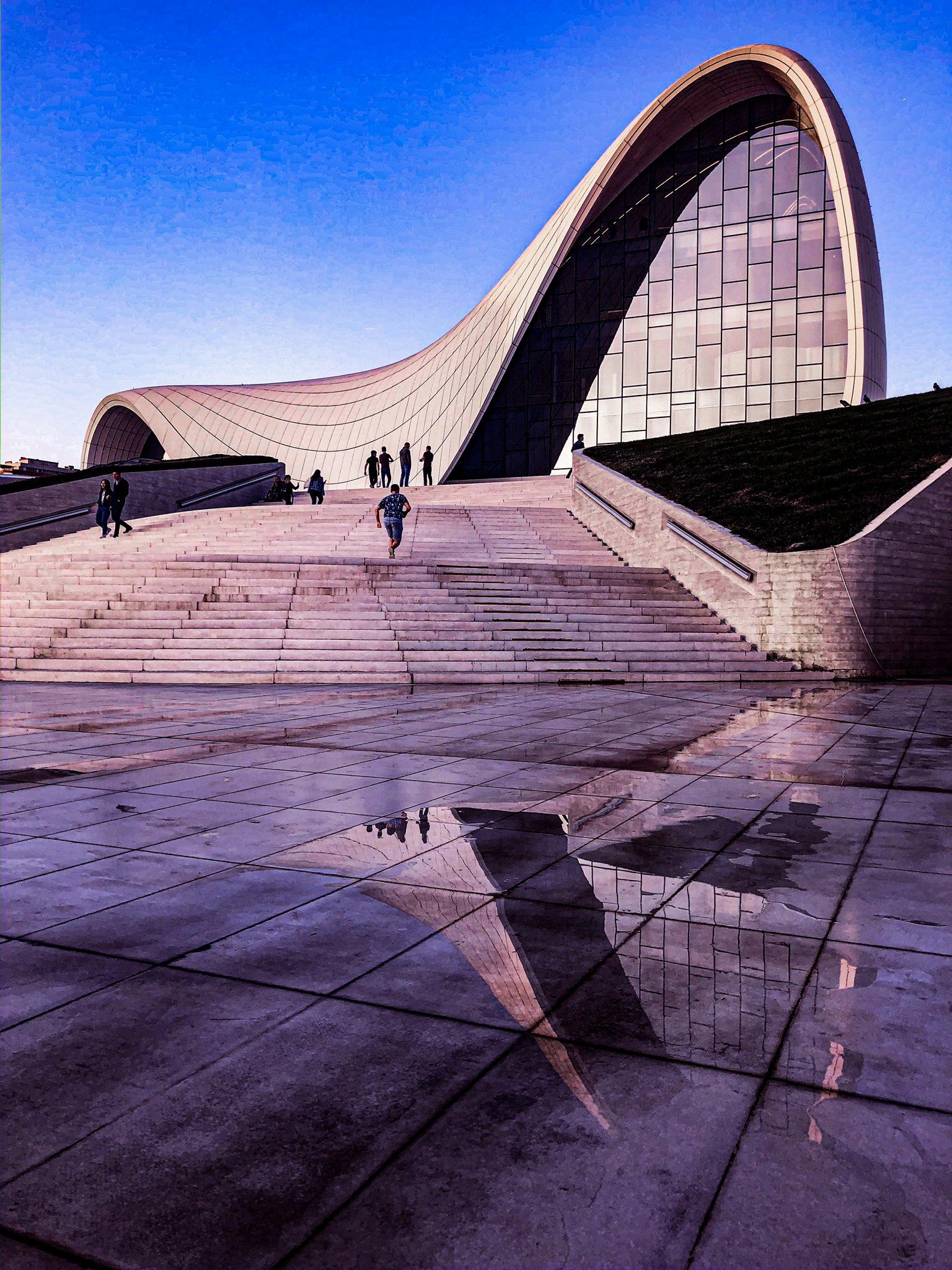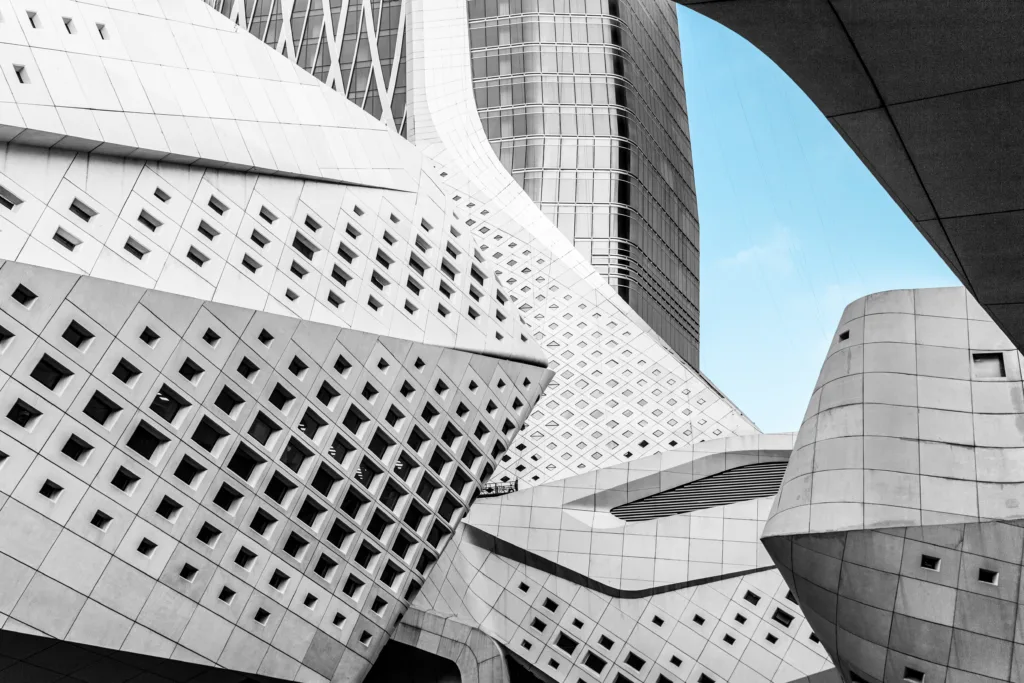Neo-Futurism is a relativly new form of architectural design that has been gaining popularity in recent years. This style of architecture is characterized by its sharp deviation from traditional design principles, and its focus on creating structures that are both aesthetically pleasing and functional.
One of the defining characteristics of Neo-Futuristic structures is their spiraling and twisting shapes. These designs are meant to suggest movement and dynamism, and to create a sense of excitement and anticipation in those who view them. The use of curves and sharp angles also serves to break up the monotony of traditional architectural forms, making Neo-Futuristic structures stand out from their surroundings.
Another important aspect of Neo-Futurism is its focus on creating structures that are environmentally sustainable. Many Neo-Futuristic buildings incorporate features like solar panels, green roofs, and rainwater harvesting systems, all of which help to reduce their impact on the environment. This emphasis on sustainability is in line with the broader trend towards eco-friendly design, and serves as a reminder of the importance of preserving our planet for future generations.
Perhaps the most important aspect of Neo-Futurism, however, is its commitment to creating structures that are both functional and aesthetically pleasing. Unlike some other styles of architecture that prioritize form over function, Neo-Futurism seeks to strike a balance between the two, creating buildings that are not only beautiful but also practical and useful. This approach makes Neo-Futuristic structures ideal for a wide range of applications, from commercial and residential buildings to public spaces like parks and museums.
Neo-Futurism is an exciting and innovative style of architecture that is sure to continue to grow in popularity in the years to come. Whether you are a fan of its unique shapes and forms, its commitment to sustainability, or its focus on practicality and functionality, there is no denying the appeal of this dynamic and forward-thinking design philosophy.
What Are The Characteristics Of Neo-futurism?
Neo-Futurism is an architectural style that deviates from the traditional and modern design concepts. It is characterized by its unique spiral forms that create a twisted and curved appearance. However, it’s essential to note that the curves are not the defining features of neo-futuristic designs. Instead, it’s the sharp departure from conventional layouts that make these structures visually appealing.
Here are some of the characteristics of neo-futuristic structures:
1. Innovative and unconventional designs that are characterized by sharp angles, spirals, and curves.
2. Use of advanced technology and materials to create unique shapes and forms.
3. Emphasis on sustainability and eco-friendliness is a critical aspect of neo-futuristic designs.
4. Neo-futuristic buildings oftn have a futuristic appearance and are designed to reflect the time they were created.
5. The use of asymmetry and irregular shapes is a key feature of neo-futuristic designs.
6. Large windows and open spaces are common in neo-futuristic buildings, allowing natural light to enter and creating an open and airy atmosphere.
7. The integration of art and technology is another defining characteristic of neo-futurism.
Neo-futurism is an architectural design style that incorporates futuristic concepts and innovative materials to create unique structures that deviate from traditional designs. The key features of neo-futuristic designs include unconventional shapes, advanced technology and materials, eco-friendliness, asymmetry, and the integration of art and technology.

What Is A Neo Futurist Play?
A Neo-Futurist play is a form of theatre that is characterized by its focus on truthful and direct communication between the performers and the audience. It is an evolving theatrical aesthetic that is based on the principles of honesty, authenticity, and transparency. In a Neo-Futurist play, the performers do not attempt to create an illusion of reality, but rather they strive to present their experiences and emotions in a raw and unfiltered way. The plays are often highly experimental and may incorporate a variety of performance styles and techniques, including physical theatre, spoken word, multimedia, and improvisation. The goal of a Neo-Futurist play is to create a direct and intimate connection between the performers and the audience, and to challenge traditional notions of what theatre can be. Some key features of Neo-Futurist plays include an emphasis on the present moment, a rejection of traditional narrative structures, and a focus on the personal experiences and perspectives of the performers. Neo-Futurism is a dynamic and exciting approach to theatre that seeks to break down barriers between performers and audience members and to create a trly immersive and engaging theatrical experience.
Who Started Neo-futurism?
Neo-futurism was initiated by Hal Foster, an American art critic and historian, during the early 1960s to late 1970s. This movement was influenced by the works of Futurist architect Antonio Sant’Elia. Foster collaborated with architects such as William Pereira, Charles Luckman, and Henning Larsen to pioneer this style. They sought to create a new architectural language that reflected the technological advancements of their time. The movement’s key characteristics include the use of new materials, simplistic shapes, and the incorporation of technology into design. Thus, Hal Foster was the driving force behind the development and introduction of neo-futurism.
What Is Futurism Architecture?
Futurist architecture is a type of architectural style that emerged in Italy during the early 20th century. It is characterized by its dramatic and dynamic lines, which suggest speed, motion, urgency, and lyricism. Futurist architecture was a part of the broader Futurism movement, which was founded by the poet Filippo Tommaso Marinetti. The movement produced its first manifesto, the Manifesto of Futurism, which emphasized the importance of embracing the future and rejecting traditional values and artistic styles. Futurist architecture sought to break free from the constraints of the past and embrace new technologies and materials, such as reinforced concrete and steel. The style often incorporated elements of industrial design and engineering, such as exposed pipes and mechanical components. Futurist architecture was influential in shaping the development of modern architecture and design, and its legacy can still be seen in contemporary buildings and structures arund the world.

Conclusion
Neo-Futurism is a unique architectural style that emphasizes the use of innovative and futuristic designs. It is characterized by its spiral and curvilinear shapes, which deviate from traditional straight lines and geometric shapes. This style is an evolution of Futurism, an artistic movement that began in the early 20th century, and was pioneered by architects such as William Pereira, Charles Luckman, and Henning Larsen. Neo-Futurism is a reflection of our society’s fascination with technology, innovation, and progress. It aims to create buildings that not only serve a functional purpose but also represent the future. With its emphasis on creativity, Neo-Futurism has the potential to shape the future of architecture and design. Neo-Futurism is an exciting and dynamic style that continues to evolve and inspire architects and designers aroud the world.
